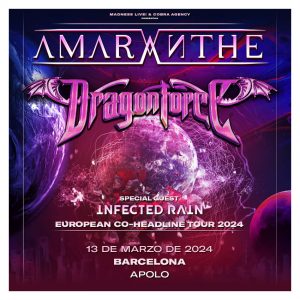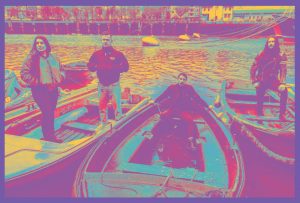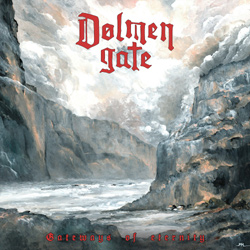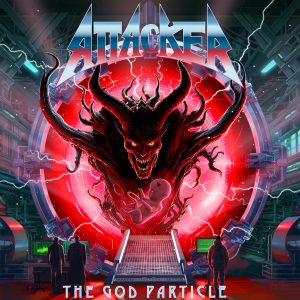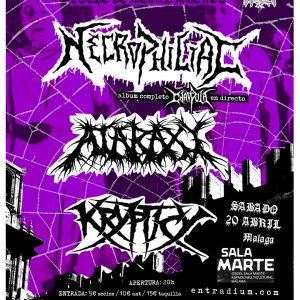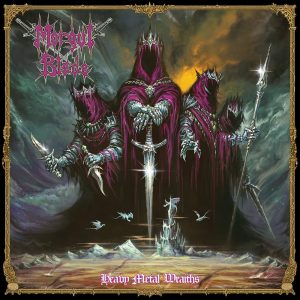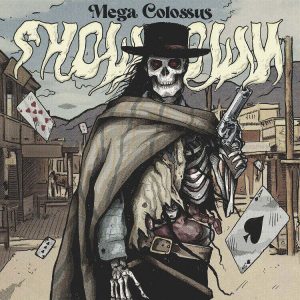LANTERN (EN)
– Hello and, first of all, thank you so much for answering to our questions. How is everything doing right now with LANTERN, being about to release your second album?
Greetings! Things are great at the moment. The II: Morphosis vinyls were delivered to our HQ last week (it’s now March 8th), and we’re waiting for the CDs to arrive any day now. The release date March 17th is imminent. I can feel this record finally happening!
– First off, instead of asking for some history of the band, I would like to know how did you come up with the name of the band and what does it represent. It feels like some sort of metaphor about fire and darkness, which seems to fit perfectly the band.
I started to toy with the band name after forming the group with vocalist Necrophilos. I remember my whereabouts (I was on a walk) when I came up with the name Lantern, initially a reminder of a Mortuary Drape song, but further a title representing contained fire (life, destruction, focus), relics from the past (like we are in a way, haha), and of course, light in the darkness that surrounds… the darkness our music wells forth from. You see, a source of luminosity is required to create vibrant shadows.
– Since your debut album, «Below», came out in 2013 you have formed a full live line-up, even J. Poussu was in the studio for the new album. Has this had any kind of effect for the final result of «II: Morphosis»? Do you see yourself adding to the studio some more members in the future?
Each of the live members is now a full-fledged band member, including J. Noisehunter on bass and St. Belial on rhythm guitar. This was the evolution after Below came out, with II: Morphosis being the first official release presenting Lantern as a five-piece. Of course, it has been much lighter for me to operate having just one instrument to deal with, but we also had to practice harder and polish the details of the songs better before studio compared to the previous studio endeavours. But the outcome is extremely satisfying: II: Morphosis is much tighter than its predecessors, not only playing-wise but also regarding the album as a whole. The focused individual efforts of each member of the five-piece helped us reach this air-proof entity, that’s for sure.
– As I said, you will soon release your new album, what are you feeling about it now that it’s done?
Like musicians usually do, I grew apart from the album (by just a bit) after we had finished recording and then mastering, but now as time has passed and the album is starting to hit the fan and create some buzz, I’m stoked! The feeling of the material being immensely strong, refreshing and respectful towards the Lantern heritage has been with us ever since we started to craft and practice the songs, and this feeling is now back, only fortified. Strangely enough, launching the second album has also woken up my urge to create new music. Bringing conclusion to the previous works has enabled me to conjure more Lantern material, while creativity was more or less on hiatus when concentrating on II: Morphosis.
– Morphosis is a phenomen of growth, of change. How autobiographical is this title? It’s obvious you guys have been through a musical evolution, which is it also linked to a personal evolution?
Actually, I haven’t thought of it in that sense. Good one! To us, evolution has been constant, natural and unnoticeable to our own eyes. It’s not been deliberate and definitely not a sequence of decisions. We’re just trying to avoid self-repetition yet stay as Lantern-like as possible, which necessitates casting our skin, thus, “to be reborn” time after time. Coming to that, the album speaks of “Morphosis” in a concept linked to dying, death, existence and the afterlife. That is how we prepared it in the first place, although the listener can draw their own conclusions. Of course, self-growth should be an inevitable result of delving headfirst into such deep, sombre themes. I do feel like I have managed to process a plethora of thoughts and emotions while working on this album, and I guess it has changed me in a way.
– Lyrics have a horror touch, but instead of being the standard Lovecraft worship/horror stories seem more like reinterpretations of certain experiences. What are your lyrics based upon and to what extent they are personal?
I could say the lyrics are very often faction of sorts, blending reality with fiction, you know, taking things a notch further and eventually “beyond”. The superficial side of the lyrics can be about death, bizarre visions I get or horrors that fascinate me, unseen terrors and hideous fates. I also have the tendency to conceal more profound subjects, visions and thoughts into more “mundane” horror lyrics, bestowing the songs a so-called sub-lyric, a message that can be read between the lines. These are, naturally, the most personal elements in my lyrics. I don’t tend to write pure manifests or sermons, I want the lyrics to be captivating, too.
– In fact this horror vibe remains through the general atmosphere of the album. Ambience and feelings seem to be an important part, even trademark I’d dare say, of this opus. Due to this I would like to know what is LANTERN for you. Maybe an outlet? If so, what do you channel through it?
It’s my tool for channelling emotions and visions from an inner plateau I cannot reach through any other means. Ambiance and atmosphere are pretty much what our music is supposed to be about. They are the key elements for portraying the landscapes of those realms within, otherwise quite hard to describe in a rational fashion. Guess it’s the twisted and otherworldly aura our music manages to evoke at best.
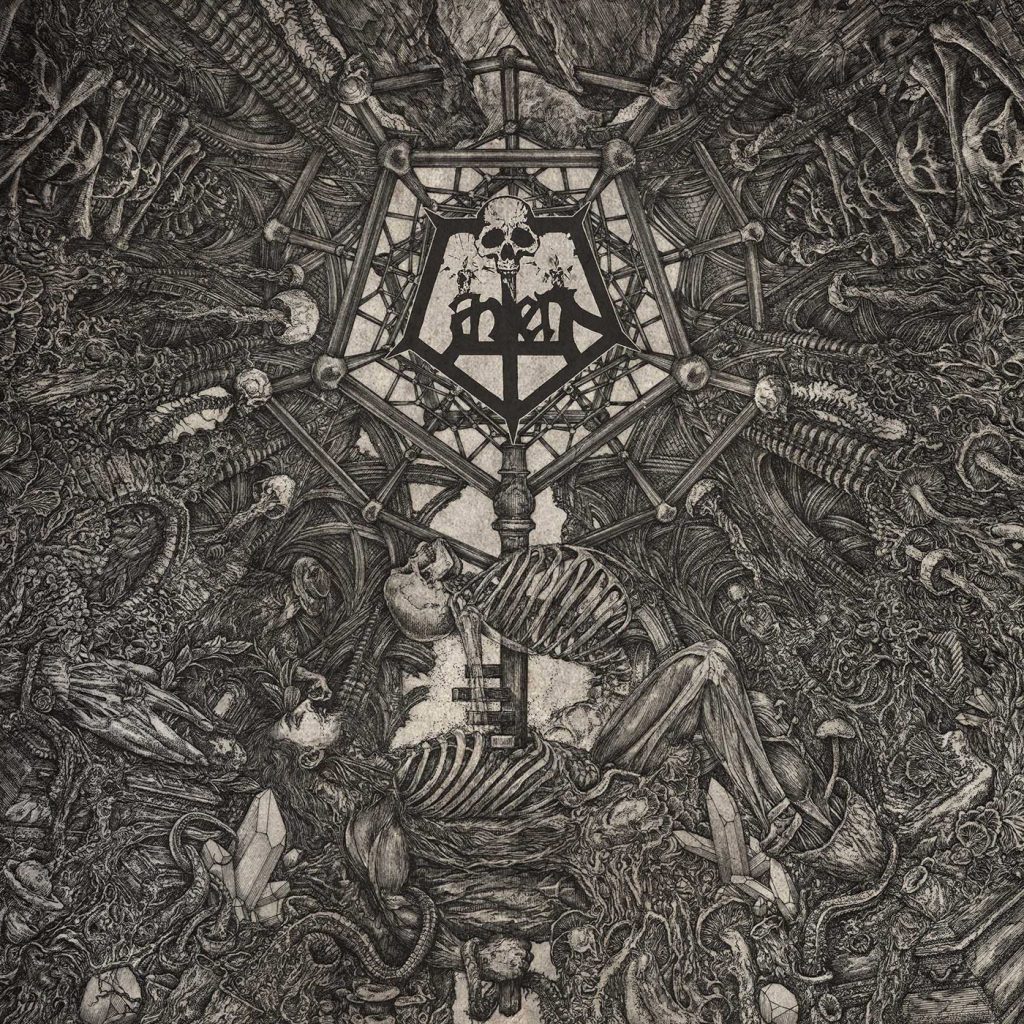
– Death is also really present throughout the whole record, it’s even reflected on the fantastic cover by Zbigniew Bielak. How does it relate to the musical and lyrical content on the album? What does it represent?
Like hinted earlier on, the album leads the listener through a transformation process, from the moment of death to phenomenon during and even after it. The album cover itself is a collage of the song themes and lyrics, mostly culminating in that “human cocoon” leaving the rot and decay and reaching out for the dome-like spire, which also symbolises the way the album progresses in general.
– «II: Morphosis» is an album full of diversity, of really varied passages, but it caught my attention how both the slowest and faster parts have the same effect on the listener, since they equally express darkness and with the same intensity. Has each part need to serve the same purporse inside the big picture the album is?
Our song repertoire is very varied itself: almost every song in our discography is highly distinct due to the songs revolving strongly around their themes. All the details are custom-tailored to serve the purposes of each song. While the album reflects on death from different angles, the songs have their own musical dimensions, too. The variety concerns speed, style and tone, with each piece still hailing from that same abovementioned inner realm, thus gaining a similar undertow. And yes, this where all the diversity on II: Morphosis musters up under the same proverbial umbrella so nicely. I don’t screen the riffs I farm too deliberately, but moreover, I try to trust my gut feeling on what sounds like Lantern and what doesn’t. I suppose this helps things stay uniform and authentic.
– Even though you transmit the same kind of dark, desolate feelings, there’s contrast on a sonic level (not emotional). What purpose do contrasts fill in this record?
The way I see it, contrasts are essential in music, especially this kind of music, where there’s a lot of details that need highlighting. It’s not always the about the sound waves themselves; sometimes the silence between the noise and the way the calm breaks apart can be more crucial. Both approaches compliment one another and help details emboss from the murk… enable the existence of a climax, I could say.
– The songwriting is really strong; each song has its own identity and have memorable moments. There are no fillers but at the same time everything feels passionate and honest. Sometimes a well-cared songwriting and performance seem to be opposed to a honest interpretation. How easy is to get a good equilibrium?
Reaching equilibrium demands a lot of patience, often a lot of time to let the brew simmer, and also, raw labour and readiness to make decisions, even hard ones. You can’t think too much, not of traditions or what people expect from you. Sometimes you have to discard good ideas that just don’t fit the big picture, re-record a nearly perfect take just to get the perfect take, et cetera. You can’t force things; working as deep in a state of non-being as possible is vital to make the music sound genuine.
– I think the sound has seen a notable changed compared to your debut. For the very first time you haven’t mixed it yourself, and such duties have been handled by Dan Lowndes at Resonance Sound Studios. How was this whole process like and how did it feel to have some else in chage?
That’s for sure! I have been enjoying being able to concentrate on creating and playing the music exclusively, no doubt about that. Working with Dan has required consciously honing two qualities: a) learning how to be a producer / whip the best out of others, since you were not in charge of immortalizing the soundscape yourself and b) letting go of your barriers and need to control, two things that were quite deep in my way of working, having done almost everything myself musically for over 15 years. But we got on the right track pretty quickly, and now I definitely wouldn’t want to go back to the old formation.
– And are you satisfied with the result obtained? I think this slightly more pulished sound fits LANTERN better.
I am! Most of the necro vibes on the old releases were mostly due to me being incapable of handling the audio job, or just having unorthodox methods doing so. Hence, like you said, a sharper sound suits us just as well, if not better. A better production gives more rights to the complex and often fast soundscape, too, giving the details the audibility they deserve. This is something our old releases suffer from, even though they do have a pleasant feeling of mystery to compensate.
– Once again you are working with Dark Descent Records, a label that lately seems to be getting bigger. Have you noticed this as a band? How are things working with them?
Yeah, we have noticed DDR growing as a label during these 5 years of co-operation, but it hasn’t come with any negative sides, really. Working with Matt equals working with a pal. He lets us do our thing music first, and we try our best to keep things as cost-effective as possible, with varied results, haha.
– All this about «II: Morphosis» being said; how could you describe it in just 3 words?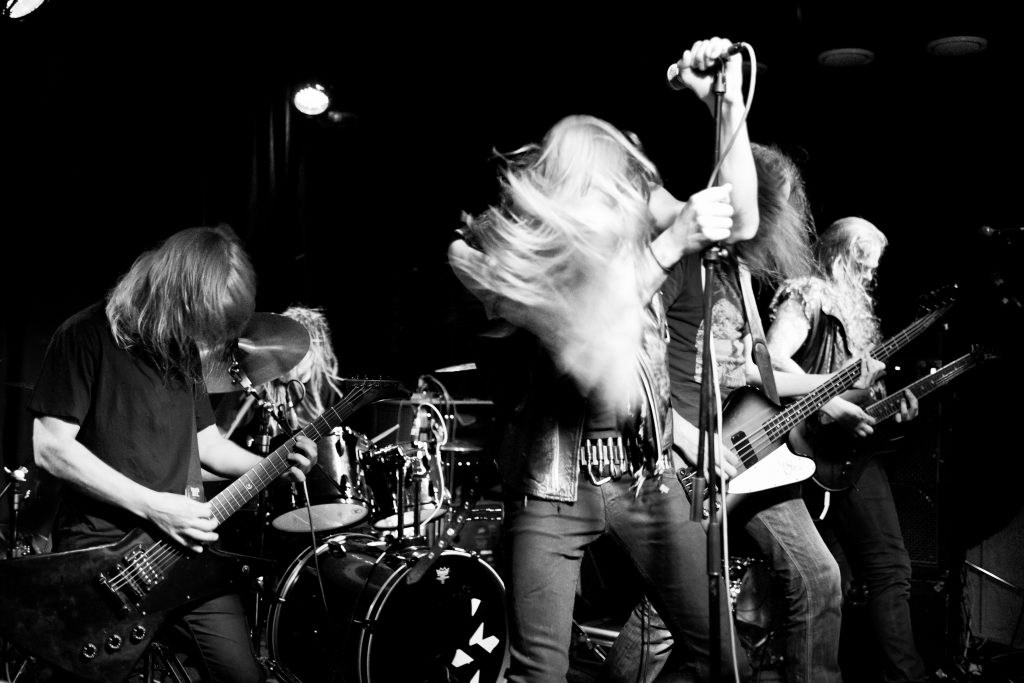
Stronger, tighter, nastier.
– And finally, any other near-future plans?
Well, aside from dealing with the release bustle of II: Morphosis, we are currently focusing on our album release / 10-years anniversary show at Helsinki Death Fest in early May 2017. After that, we intend to start rehearsing some tracks old and new, which we aim to record for the postponed 7” project, or whatever format the material from that session will eventually develop into. Other than that, I’m writing new music (slow but steady), and we will also begin to go through the riffs St. Belial has in stock. We’ll see if this means us being able to break free from my compositional dictatorship.
– That’s all from our side, thank you once more for answering to our interview. If you now want to add some final words; last lines are yours.
Thank you for this interview! Stay tuned for the new record, and hope to catch up with you people in the live front.
Tania Giménez
tania@queensofsteel.com
